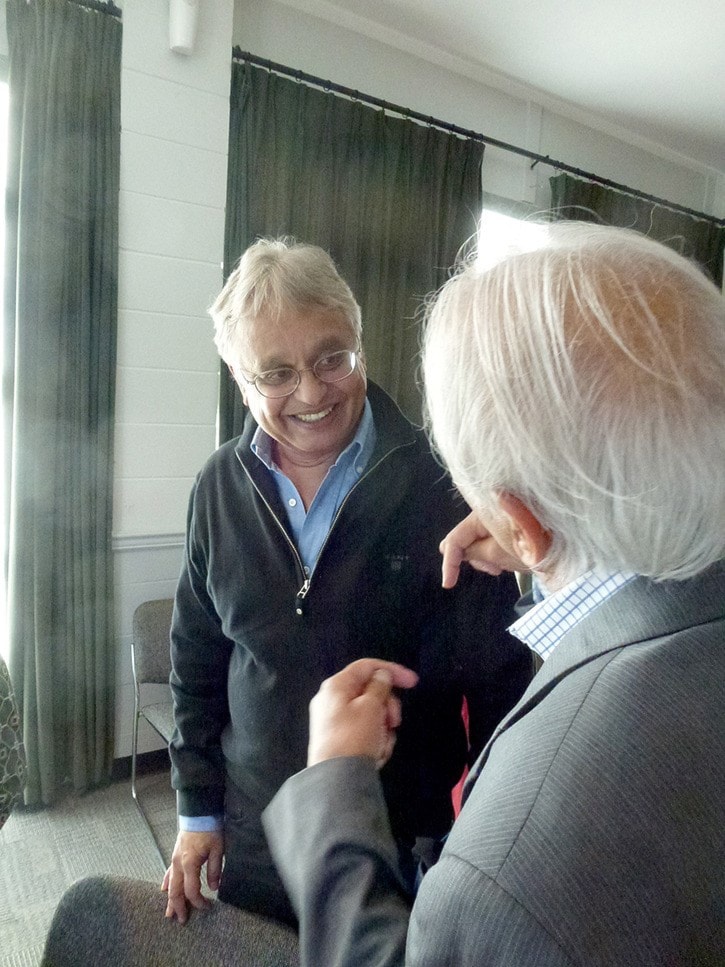While many people might have a hard time getting their heads around particle theory – as internationally noted nuclear physicist Dr Vinod Chohan acknowledged at White Rock Rotary Club's lunch meeting last week – most probably have an intimate acquaintance with one of the better-known byproducts of the experimental work of Geneva-based CERN (the European Organization for Nuclear Research).
"If it weren't for us, you wouldn't have the World Wide Web," Chohan – whose work with CERN on particle acceleration contributed to a 1983 Nobel Prize – told club members and guests Nov. 26.
CERN experiments required the development of the "most extensive computer system in the world" to share information rapidly between at least 2,500 physicists, he said.
The Tanzanian-born specialist and engineer, on the Peninsula to visit his sister, Rama Bali, was part of the CERN team that led to the Higgs-Boson discovery of the W and Z bosons – elementary particles that play an important role in the principles involved in nuclear fission – and closely associated with Simon Van der Meer, who shared in the Nobel Prize for the work.
CERN's experiments utilizing a Large Hadron Collider to simulate the circumstances that led to the formation of the universe – "we believe everything started with a big bang about 14 million years ago" – were done primarily "to push back the frontiers of knowledge," he said.
But they also led to huge advancements in technology, including development of detectors that had a huge impact on health care by making possible sophisticated medical imaging, he noted.
The experiment, which created a "circular collider" 27 km in circumference, seems to have pointed CERN scientists toward creating an FCC (future circular collider, "a mind-boggling" 100 km in circumference – but Chohan said the reality is that it will be subject to ongoing competition among the sciences for funding.
"No one science can claim to have a monopoly – we all have to play it by ear," he said following the meeting, before also addressing members of the public at a talk that evening at Panorama Ridge Secondary.
"Like NASA – why is that getting the money now? It's because (its work) is something that intrigues the majority of people. My field was very sexy after the Second World War, because of the nuclear bomb and looking at what the potential of nuclear physics was, but now it's 60 or 70 years later."
